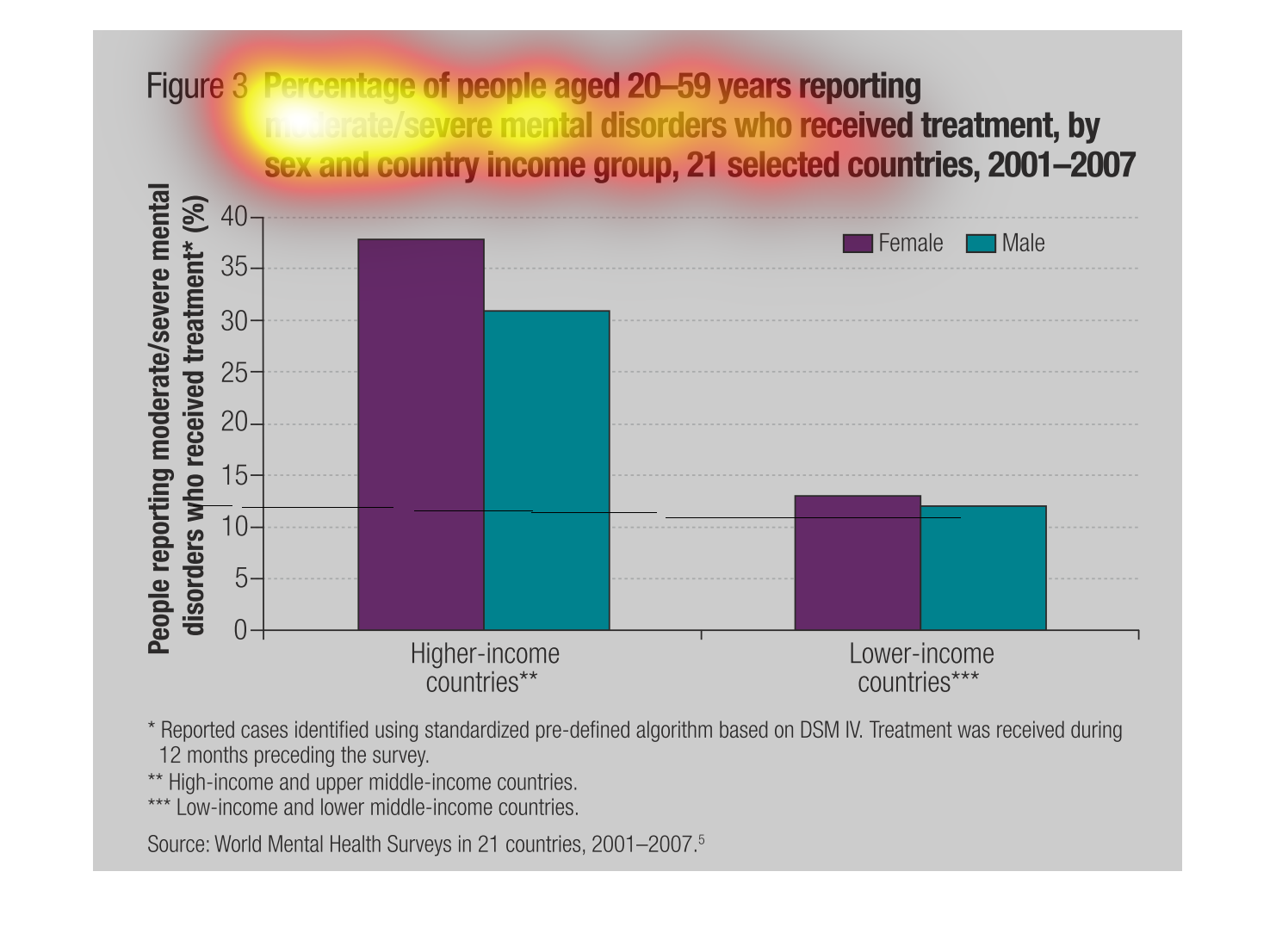
Percentage of people age 20-59 years of age reporting moderate/severe mental disorders who
received treatment, by sex and country income group, 21 selected countries, 2001-2007. The
higher income countries have a higher percentage of individuals reporting moderate-severe
mental disorders.


The graph compares mental disorders in people 20 to 59 years of age who received sex as a
treatment in 21 countries between 2001 and 2007. Groups were compared by country income and
sex. Country income appears to correlate with sex treatment alone.


The following chart lists the number of people in different countries who sought treatment
for a mental illness. It is broken down by sex of the patient and shows 21 different countries.


This chart shows the Percentage of people aged 20-59 years of age reporting moderate/severe
mental disorders who received treatment, by sex and country.


This graph depicts how people of higher income get there mental illness treated more often
than people of lower income areas. Between 2001-2007, about 35 percent of people living with
a mental disorder got it treated while only 10 percent of people dealt with their problems
because they are living in lower income countries.


This chart describes the percentage of people aged 20-59 years reporting moderate/severe mental
disorders who received treatment, by sex and country income group.


This chart describes and depicts the percentage of people aged twenty to fifty-nine who are
reporting mental illness and received treatment by sex and country.


This study is trying to illustrate how their is a major difference in affluent people who
seek treatment for mental disorders than those of less means. Though one could infer that
the rich suffer from more mental health issues, the reality is that less cases are reported
within the poor because they do not have the necessary means a lot of the time to get the
care they require.


This graph shows the overall percentage of people in the age group of twenty to fifty-nine.
The individuals are grouped by sex and income. age always playes a factor when making a bar
graph.


This graph demonstrates the percentage of people from ages 20 - 59 who have received mental
health treatment based on their gender,and income level.The results indicate that people of
greater wealth are more likely to receive mental health treatment then those of a lower income
bracket. Overall women are more likely to seek treatment over men.


The chart shows statistics about the number of people reporting severe mental illnesses received
treatment from 2001 -2007. In higher income countries approximately 40% of these people receive
treatment, with more females getting treatment than males. In lower income countries about
10-15 people receive treatment, again mostly females.


This image shows a percentage of individuals between the ages of 20 to 59 who have been reported
to have moderate to severe mental disorders. The information in this image is based upon data
compiled by World Mental Health Surveys.


It is a bar graph that shows a correlation between wealth and moderate/severe mental illnesses.
It spans 21 country's and shows that in low income countries mental illness is much lower
then in countries that are high income.


This graph shows the percentage of people aged 20 to 59 years reporting moderate to severe
mental disorders that are not receiving treatment by sex, country, and income group for the
years 2001 to 2007.






























